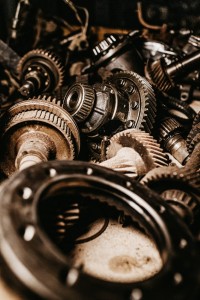An Easy Guide to Gear Cutting
Gear Cutting
Gear cutting is any machining process for creating a gear. The most common gear-cutting processes include hobby, broaching, milling and grinding. These cutting operations may occur either after or instead of performing processes such as forging, extruding, investment casting or sand casting.
There Are Various Types of Gear Cutting Including:
- Spurs
- Bevel
- Helical
- Moulded
- Racks
- Worm and worm wheels
- Internal gears

The Process of Broaching:
For larger gears, a vertical broach is used. It consists of a vertical rail that carrier s single tooth cutter formed to create the tooth shape. Some machines will cut to a depth on the Y-axis and index the rotary table automatically.
The Process of Hobbing:
Hobbing is a method which a hob is used to cut teeth into a blank gear. The cutter and blank gear are rotated at the same time to allocate the profile of the hob onto the gear blank. The hob must make one revolution to create every tooth of the gear. This process of gear cutting is used very often for all sizes of production runs but works best for medium to high.
The Process of Milling and Grinding:
A spur may be cut or ground on a milling machine utilising a gear cutter and any indexing head or rotary table. The number of the gear cutter is determined by the tooth count of the gear to be cut. To machine a helical gear on a manual machine, a true indexing fixture must be used. Indexing fixtures can disengage the drive worm and be attached via an external gear train to the machine table’s handle.
After the gear cutting has taken place and it is finished by shaving, burnishing, grinding, honing or lapping.